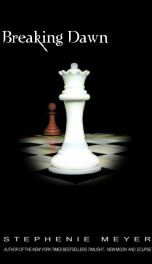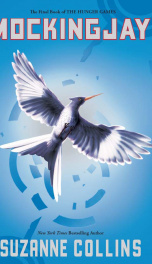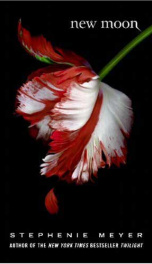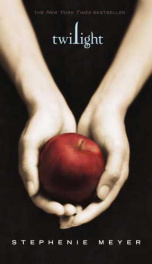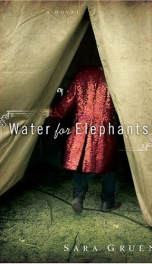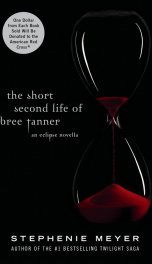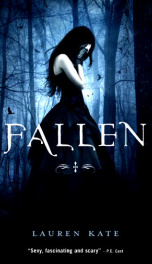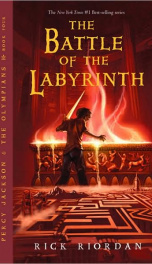Brontë Charlotte
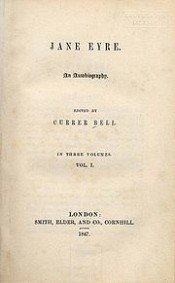
Charlotte Brontë (pronounced /ˈbrɒnti/) (21 April 1816 – 31 March 1855) was an English novelist, the eldest of the three Brontë sisters whose novels are English literature standards. Charlotte Brontë, who used the pen name Currer Bell, wrote Jane Eyre. Charlotte was born in Thornton, Yorkshire in 1816, the third of six children, to Patrick Brontë (formerly "Patrick Brunty"), an Irish Anglican clergyman, and his wife, Maria Branwell. In April 1821, the family moved a few miles to Haworth, where Patrick had been appointed Perpetual Curate. Maria Branwell Brontë died of cancer on 15 September 1821, leaving five daughters and a son to the care of her sister Elizabeth Branwell. In August 1824, Charlotte was sent with three of her sisters; Emily, Maria and Elizabeth, to the Clergy Daughters' School at Cowan Bridge in Lancashire (which she would describe as Lowood School in Jane Eyre). Its poor conditions, Charlotte maintained, permanently affected her health and physical development and hastened the deaths of her two elder sisters, Maria (born 1814) and Elizabeth (born 1815), who died of tuberculosis in June 1825 soon after their father removed them from the school on 1 June. At home in Haworth Parsonage, Charlotte and the other surviving children — Branwell, Emily and Anne — began chronicling the lives and struggles of the inhabitants of their imaginary kingdoms. Charlotte and Branwell wrote Byronic stories about their country — Angria — and Emily and Anne wrote articles and poems about theirs — Gondal. The sagas were elaborate and convoluted (and still exist in part manuscripts) and provided them with an obsessive interest in childhood and early adolescence, which prepared them for their literary vocations in adulthood. Charlotte continued her education at Roe Head, Mirfield, from 1831 to 1832, where she met her lifelong friends and correspondents, Ellen Nussey and Mary Taylor. During this period (1833), she wrote her novella The Green Dwarf under the name of Wellesley. Charlotte returned as a teacher from 1835 to 1838. In 1839 she took up the first of many positions as governess to various families in Yorkshire, a career she pursued until 1841. In 1842 she and Emily travelled to Brussels to enroll in a boarding school run by Constantin Heger (1809 – 1896) and his wife Claire Zoé Parent Heger (1814 – 1891). In return for board and tuition, Charlotte taught English and Emily taught music. Their time at the boarding school was cut short when Elizabeth Branwell, their aunt who joined the family after the death of their mother to look after the children, died of internal obstruction in October 1842. Charlotte returned alone to Brussels in January 1843 to take up a teaching post at the boarding school. Her second stay at the boarding school was not a happy one; she became lonely, homesick and deeply attached to Constantin Heger. She finally returned to Haworth in January 1844 and later used her time at the boarding school as the inspiration for some of The Professor and Villette. In May 1846, Charlotte, Emily and Anne published a joint collection of poetry under the assumed names of Currer, Ellis and Acton Bell. Although only two copies were sold, the sisters continued writing for publication and began their first novels. Charlotte used "Currer Bell" when she published her first two novels. Of this, Brontë later wrote: "Averse to personal publicity, we veiled our own names under those of Currer, Ellis and Acton Bell; the ambiguous choice being dictated by a sort of conscientious scruple at assuming Christian names positively masculine, while we did not like to declare ourselves women, because—without at that time suspecting that our mode of writing and thinking was not what is called 'feminine' -- we had a vague impression that authoresses are liable to be looked on with prejudice; we had noticed how critics sometimes use for their chastisement the weapon of personality, and for their reward, a flattery, which is not true praise". [1] Her novels were deemed coarse by the critics. There was speculation about the identity of Currer Bell, and whether Bell was a man or a woman. Charlotte's brother, Branwell, the only son of the family, died of chronic bronchitis and marasmus exacerbated by heavy drinking in September 1848, although Charlotte believed his death was due to tuberculosis. Branwell was also a suspected "opium eater", (i.e. a laudanum addict). Emily and Anne both died of pulmonary tuberculosis in December 1848 and May 1849, respectively. Charlotte and her father were now left alone together. In view of the enormous success of Jane Eyre, she was persuaded by her publisher to visit London occasionally, where she revealed her true identity and began to move in a more exalted social circle, becoming friends with Harriet Martineau, Elizabeth Gaskell, William Makepeace Thackeray and G. H. Lewes. Her book had sparked a movement in regards to feminism in literature. The main character, Jane Eyre, in her novel Jane Eyre, was a parallel to herself, a woman who was strong. However, she never left Haworth for more than a few weeks at a time as she did not want to leave her aging father's side. In June 1854, Charlotte married Arthur Bell Nicholls, her father's curate, and became pregnant soon thereafter. Her health declined rapidly during this time, and according to Gaskell, her earliest biographer, she was attacked by "sensations of perpetual nausea and ever-recurring faintness."[2] Charlotte died, along with her unborn child, on 31 March 1855, at the young age of 39. Her death certificate gives the cause of death as phthisis (tuberculosis), but many biographers suggest she may have died from dehydration and malnourishment, caused by excessive vomiting from severe morning sickness. There is also evidence to suggest that Charlotte died from typhus she may have caught from Tabitha Ackroyd, the Brontë household's oldest servant, who died shortly before her. Charlotte was interred in the family vault in The Church of St. Michael and All Angels, Haworth, West Yorkshire, England. The Life of Charlotte Brontë, the posthumous biography of Charlotte Brontë by novelist Elizabeth Gaskell, was the first of many biographies about Charlotte to be published. Though frank in places, Gaskell suppressed details of Charlotte's love for Heger, a married man, as being too much of an affront to contemporary morals and as a possible source of distress to Charlotte's still-living friends, father and husband (Lane 1853 178–183). Gaskell also provided doubtful and inaccurate information about Patrick Brontë, claiming, for example, that he did not allow his children to eat meat. This is refuted by one of Emily Brontë's diary papers, in which she describes the preparation of meat and potatoes for dinner at the parsonage, as Juliet Barker points out in her recent biography, The Brontës. It was discovered that Charlotte wrote 20 manuscript pages of a book, but died before she could finish; Clare Boylan finished it in 2007 as Emma Brown: A Novel from the Unfinished Manuscript by Charlotte Brontë. The Green Dwarf (1833) · Jane Eyre (1847) · Shirley (1849) · Villette (1853) · The Professor (1857) Wuthering Heights (1847) Agnes Grey (1847) · The Tenant of Wildfell Hall (1848) Poems by Currer, Ellis, and Acton Bell (1846) Brontë Country · Patrick Brontë · Branwell Brontë · Ellen Nussey · Constantin Heger · Victorian literature
do you like this author?
What readers are saying
What do you think? Write your own comment on this book!
write a commentWhat readers are saying
What do you think? Write your own comment on this author!
write a commentBook list
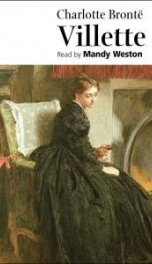
Villette
Series:
Unknown
Year:
Unknown
Raiting:
4.5/5
Written by the author of world-famous "Jane Eyre", "Villette" is considered to be one of the finest Charlotte Bronte’s works. The book tells the story of a young teacher at a girls school in the French town of Villette named Lucy Snow and is superbly told by Mandy Weston. This tale is of an inwardly emotional journey than anything eventfully culminating or epically engaging. Plot-wise, this merely treks the path of a young English woman completely alone in the world gaining her livelihood in a girls' school on the European continent. Affecting the treads of that path are those, come by choice or commitment, closest to her: her voyeuristic employer Madame Beck, friends - privileged & affectionate childhood companion Polly and conceited & light-headed fellow student Ginerva - the handsome & winsome Dr. John, and temperamental & eccentric professor M. Paul. It's truly an inward journey- a seeking and finding of one's own identity: the heroine - enthralled in a life as outwardly merciless as it is inwardly rich - is undeniably endearing, her story wrought with so many sparkles of pain, so few of bliss.
Show more
add to favoritesadd In favorites
Book list

Villette
Series:
Unknown
Year:
Unknown
Raiting:
4.5/5
Written by the author of world-famous "Jane Eyre", "Villette" is considered to be one of the finest Charlotte Bronte’s works. The book tells the story of a young teacher at a girls school in the French town of Villette named Lucy Snow and is superbly told by Mandy Weston. This tale is of an inwardly emotional journey than anything eventfully culminating or epically engaging. Plot-wise, this merely treks the path of a young English woman completely alone in the world gaining her livelihood in a girls' school on the European continent. Affecting the treads of that path are those, come by choice or commitment, closest to her: her voyeuristic employer Madame Beck, friends - privileged & affectionate childhood companion Polly and conceited & light-headed fellow student Ginerva - the handsome & winsome Dr. John, and temperamental & eccentric professor M. Paul. It's truly an inward journey- a seeking and finding of one's own identity: the heroine - enthralled in a life as outwardly merciless as it is inwardly rich - is undeniably endearing, her story wrought with so many sparkles of pain, so few of bliss.
Show more
add to favoritesadd In favorites
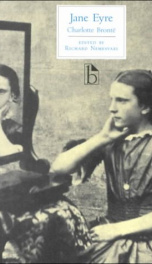
Jane Eyre
Series:
Unknown
Year:
Unknown
Raiting:
4.5/5
“Jane Eyre” by Charlotte Bronte, English novelist, the eldest of the three Brontë sisters, has much of a gothic novel. The book recounts a life of a young woman, a strong independent personality, describing her childhood, growing up, searching of her way in life and obstacles she encounters. It is worth noticing that the early events of the novel, when little Jane is sent to a rigorous Lowood School, are based on the personal author’s experience. Jane struggles through her cheerless childhood and becomes governess at Thornfield Hall, where she falls in love with Edward Rochester, rich owner of the gloomy Gothic estate, but her moral convictions keep her from becoming his mistress. Let the rest of the book, having an intricate, exciting plot and touching questions of morality, religion and gender relations, speak for itself.
Show more
add to favoritesadd In favorites
What readers are saying
What do you think? Write your own comment on this author!
write a commentif you like Brontë Charlotte try:
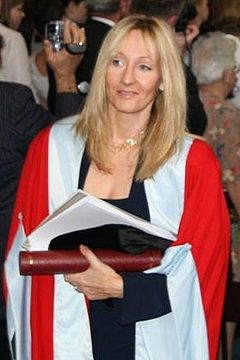
Joanne K. Rowling
(Author)

Stephenie Meyer
(Author)

Sara Gruen
(Author)
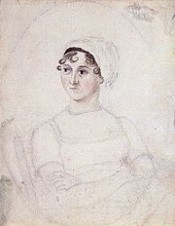
Austen Jane
(Author)

Rick Riordan
(Author)

Charlaine Harris
(Author)

Suzanne Collins
(Author)

Austen, Jane, 1775-1817
(Author)

Emily Brontë
(Author)

Stephen Chbosky
(Author)

Alyson Noel
(Author)

Paolo Coelho
(Author)

P.C. Cast & Kristin Cast
(Author)

Stieg Larsson
(Author)

Pittacus Lore
(Author)

George R R Martin
(Author)

Richelle Mead
(Author)

Karen Marie Moning
(Author)

Kristin Cast
(Author)

Holly Black
(Author)

P.C. Cast and Kristin Cast
(Author)
readers also enjoyed
What readers are saying
What do you think? Write your own comment on this author!
write a commentGenre
if you like Brontë Charlotte try:
readers also enjoyed
Do you want to read a book that interests you? It’s EASY!
Create an account and send a request for reading to other users on the Webpage of the book!



